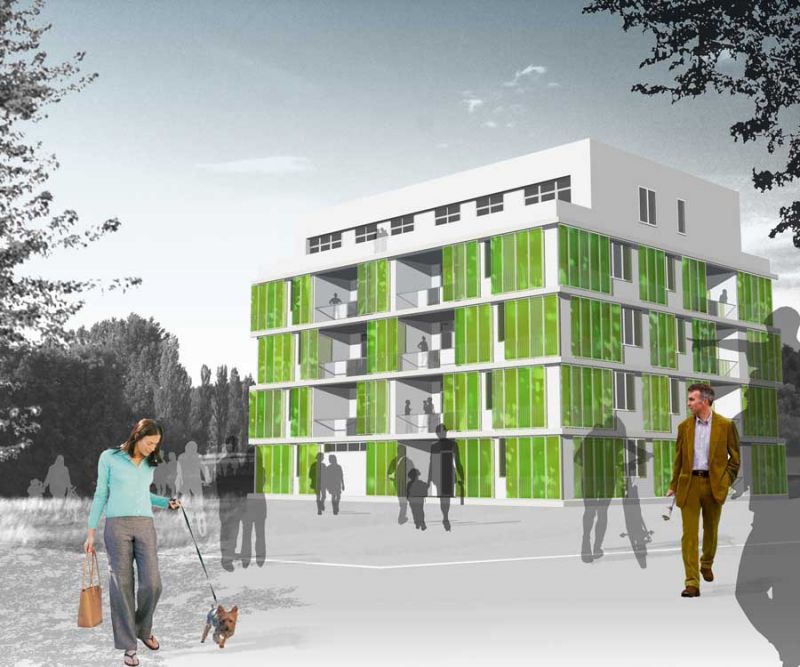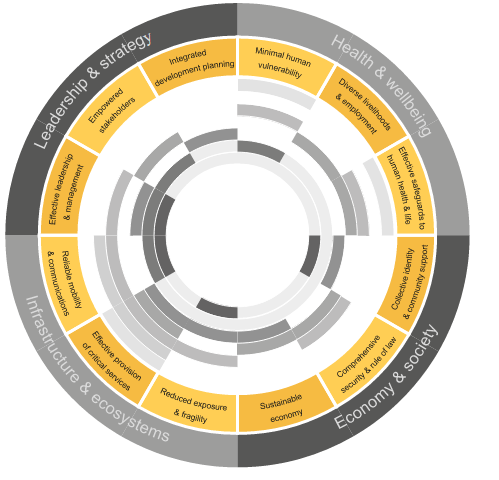New Tool for Measuring Urban Resilience
Published on by Dusko Balenovic, Previous Network Manager at The Water Network in Academic
Arup International Development created a new city index to make the concept of resilience “tangible, practical and globally applicable”, and help cities measure their progress in developing resilience.
 Building “resilience” in cities is a hot topic these days among city leaders.
Building “resilience” in cities is a hot topic these days among city leaders.
Yet even to many who agree with that goal, the concept of urban resilience remains vague and the act of creating more of it hard to measure.
That’s why Arup International Development, a non-profit arm of the global engineering and consultancy firm, developed something called the City Resilience Index.
It’s a tool that breaks “resilience” down into recognisable parts — and gives local leaders a way to assess where their city stands.
The Index was launched in 2014 and is now used by at least 120 cities, including many from the Rockefeller Foundation’s 100 Resilient Cities programme.
It also was the subject of a session at last month’s Habitat III summit on cities in Quito, Ecuador. Arup’s Jo da Silva said the Index is meant to help make the concept of resilience “tangible, practical and globally applicable”.
Da Silva defined resilience as the ability of people living and working in cities — particularly the poor and vulnerable — to “survive, adapt and thrive whatever happens”.
To make that measurable, the Index breaks resilience down into 12 goals that cities can aim for. For example, there’s a goal related to building “comprehensive security and rule of law”, another goal for building “reliable mobility and communications”, and another for creating “effective leadership and management”.
Each goal comes with a set of indicators that allow cities to measure their progress. For example, the goal of achieving “minimal human vulnerability” comes with indicators related to the availability of adequate housing, energy, drinking water, sanitation, and food.
 Cities using the Index essentially perform a self-assessment about their ability to withstand shocks and bounce back after.
Cities using the Index essentially perform a self-assessment about their ability to withstand shocks and bounce back after.
To aid in that self-assessment, each indicator comes with a set of questions probing different aspects of city operations.
The questions are meant to evoke both qualitative and quantitative answers from a team composed of experts from various fields.
These data points do not allow for meaningful comparisons between cities.
But within a city, they can establish a baseline understanding of what a city’s strengths and weaknesses are. They also can provide a framework to see how a city’s resilience is improving or declining over time — without having to endure a disaster to find out.
The City Resilience Index is available online and produces data visualisations that offer a snapshot of a city’s current resilience capacities.
At best, Da Silva said, the tool helps cities and civil society groups to clearly define their resilience situation and to develop tangible strategies that are backed up by data.
Panwar agreed. Building resilience, he said, “requires sound and well-informed decision making using the best available data — and reconciling this with the realities of the city”.
The City Resilience Index: 12 goals and 52 indicators
1. Minimal human vulnerability
- Safe and affordable housing
- Adequate affordable energy supply
- Inclusive access to safe drinking water
- Effective sanitation
- Sufficient affordable food supply
2. Diverse livelihood and employment
- Inclusive labour policies
- Relevant skills and training
- Dynamic local business development and innovation
- Supportive financing mechanisms
- Diverse protection of livelihoods following a shock
3. Effective safeguards to human health and life
- Robust public health systems
- Adequate access to quality healthcare
- Emergency medical care
- Effective emergency response services
4. Collective identity & community support
- Local community support
- Cohesive communities
- Strong city-wide identity and culture
- Actively engaged citizens
5. Comprehensive security and rule of law
- Effective systems to deter crime
- Proactive corruption prevention
- Competent policing
- Accessible criminal and civil justice
6. Sustainable economy
- Well-managed public finances
- Comprehensive business continuity planning
- Diverse economic base
- Attractive business environment
- Strong integration with regional and global economies
7. Reduced exposure & fragility
- Comprehensive hazard and exposure mapping
- Appropriate codes, standards and enforcement
- Effectively managed protective ecosystems
- Robust protective infrastructure
8. Effective provision of critical services
- Effective stewardship of ecosystems
- Flexible infrastructure services
- Retained spare capacity
- Diligent maintenance and continuity
- Adequate continuity for critical assets and services
9. Reliable mobility and communications
- Diverse and affordable transport networks
- Effective transport operation & maintenance
- Reliable communications technology
- Secure technology networks
10. Effective leadership and management
- Appropriate government decision-making
- Effective co-ordination with other government bodies
- Proactive multi-stakeholder collaboration
- Comprehensive hazard monitoring and risk assessment
- Comprehensive government emergency management
11. Empowered stakeholders
- Adequate education for all
- Widespread community awareness and preparedness
- Effective mechanisms for communities to engage with government
12. Integrated development planning
- Comprehensive city monitoring and data management
- Consultative planning process
- Appropriate land use and zoning
- Robust planning approval process
Source: City Scope
Media
Taxonomy
- Integrated Urban Water Management
- Smart City
- Climate Change Resilience
- Infrastructure
- Integrated Infrastructure
- Eco-City Development
- City